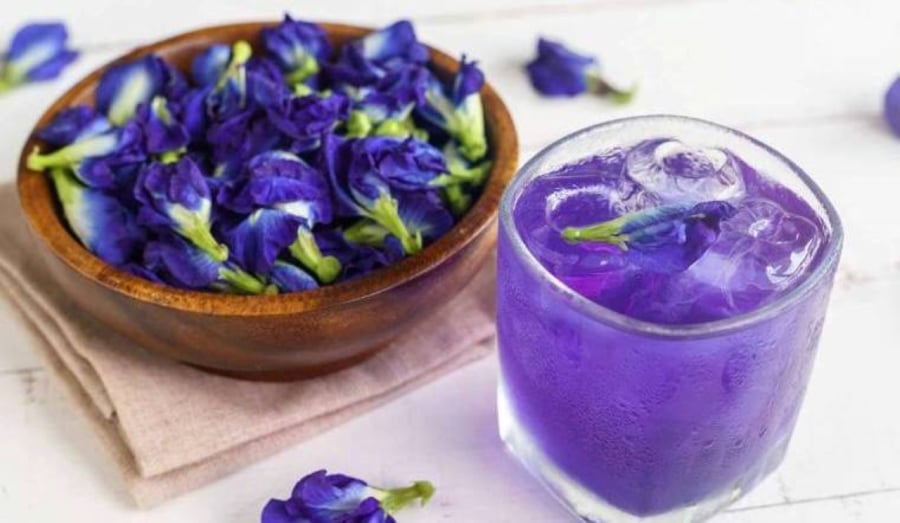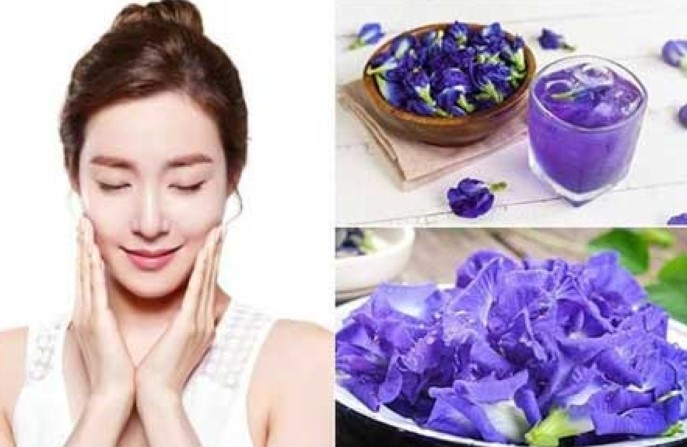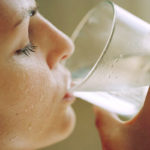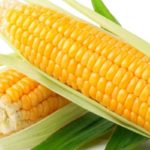Butterfly pea flower, also known as blue pea flower or Asian pigeonwings, is a climbing, herbaceous, perennial plant that is often grown as a hedge or ornamental vine. The flowers are blue, deep indigo, or white, but the most common variety is blue.
If you are looking for a fragrant cup of tea, butterfly pea tea will disappoint you. It is not aromatic, flowery, or pungent like many other teas. It has a very faint scent, so faint that it is almost lost amidst its spectacular blue hue.

Butterfly pea flower tea has a very faint scent, so faint that it is almost lost amidst its spectacular blue hue.
Surprising benefits of butterfly pea flower
Here are some of the benefits of butterfly pea flower:
- May help fight cancer
According to several scientific studies, butterfly pea flower contains active compounds (nucleotides and esters) that stimulate white blood cells to detect and suppress the growth of cancer cells. Additionally, butterfly pea flower contains cliotide, a substance that can inhibit the replication of cancer cells.
- May prevent diabetes
Butterfly pea flower contains substances that help the body produce more insulin, which helps stabilize blood sugar levels and prevent diabetes.
- May improve brain function
Butterfly pea flower contains proanthocyanidin, a substance that has been shown to support blood flow and improve memory. Therefore, butterfly pea flower is considered to be good for brain health.
- May improve cardiovascular health
Numerous studies have shown that butterfly pea flower significantly reduces the risk of death from coronary artery disease because it helps protect blood vessel walls, prevents arteriosclerosis, reduces blood clots, prevents cerebral thrombosis, and lowers blood pressure.
- May boost the immune system
Butterfly pea flower contains anthocyanins, which help prevent DNA damage and lipid peroxidation, and promote the production of cytokines that are beneficial to the immune system.
- May aid in weight loss
The catechin EGCG (epigallocatechin gallate) found in butterfly pea flower helps boost metabolism and promote calorie burning, thereby aiding in weight loss.

Butterfly pea flower is not only effective for a variety of ailments, but it also helps with weight loss and beauty…
- May improve skin health
The antioxidants in butterfly pea flower help reduce free radical production, fight aging, and improve the appearance and texture of your skin.
- Culinary uses
Butterfly pea flower is flavorful and nutritious, so it is often used in cooking or to make beverages.
Butterfly pea flower can be used fresh or dried. Popular dishes made with butterfly pea flower include butterfly pea flower sticky rice, butterfly pea flower dumplings, butterfly pea flower tea, butterfly pea flower jelly, and butterfly pea flower yogurt.
Note: When using butterfly pea flower
Butterfly pea flower is very beneficial for human health, but too much of anything can be harmful. Butterfly pea flower contains a mildly toxic substance called anthocyanin.
To use butterfly pea flower safely, do not consume more than 640mg of anthocyanin (equivalent to the amount found in 20 butterfly pea flowers) per day to avoid side effects.
Who should not use butterfly pea flower
The active compounds in butterfly pea flower can make it difficult for blood to clot and slow down wound healing, so people taking blood thinners, women on their period, and people who are about to undergo surgery should avoid using butterfly pea flower.
- Potential cancer-fighting properties due to its active compounds that stimulate white blood cells and inhibit cancer cell growth.
- Assistance in diabetes prevention by helping the body produce more insulin to stabilize blood sugar levels.
- Improved brain function and memory through the substance proanthocyanidin, which supports blood flow to the brain.
- Enhanced cardiovascular health by reducing the risk of death from coronary artery disease and preventing arteriosclerosis, blood clots, and cerebral thrombosis.
- Boosted immune system due to the presence of anthocyanins, which prevent DNA damage and promote cytokine production.
- Weight loss support through the catechin EGCG, which boosts metabolism and promotes calorie burning.
- Improved skin health by reducing free radical production and fighting signs of aging.



































